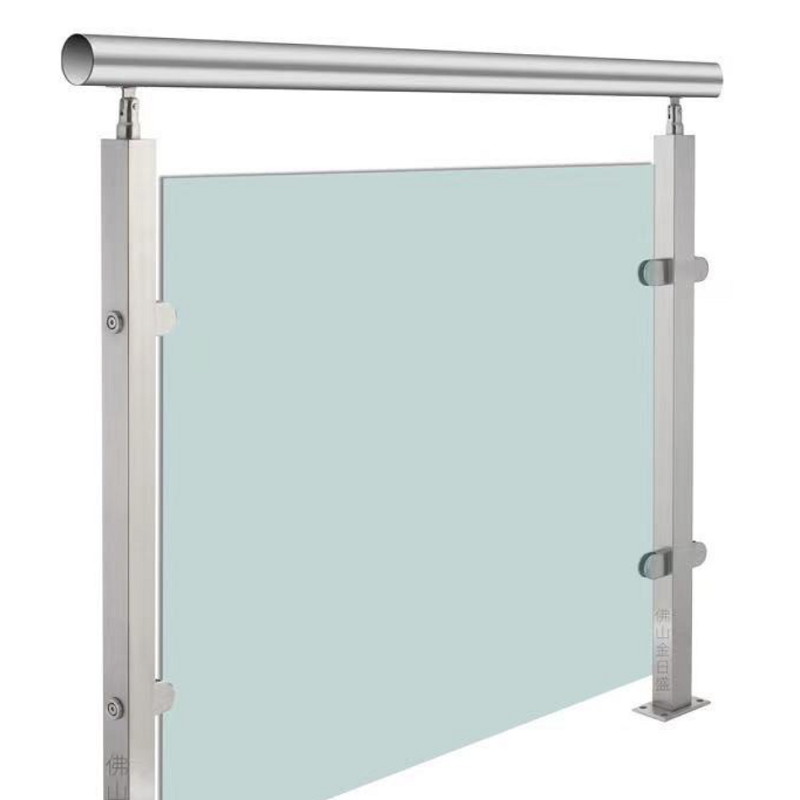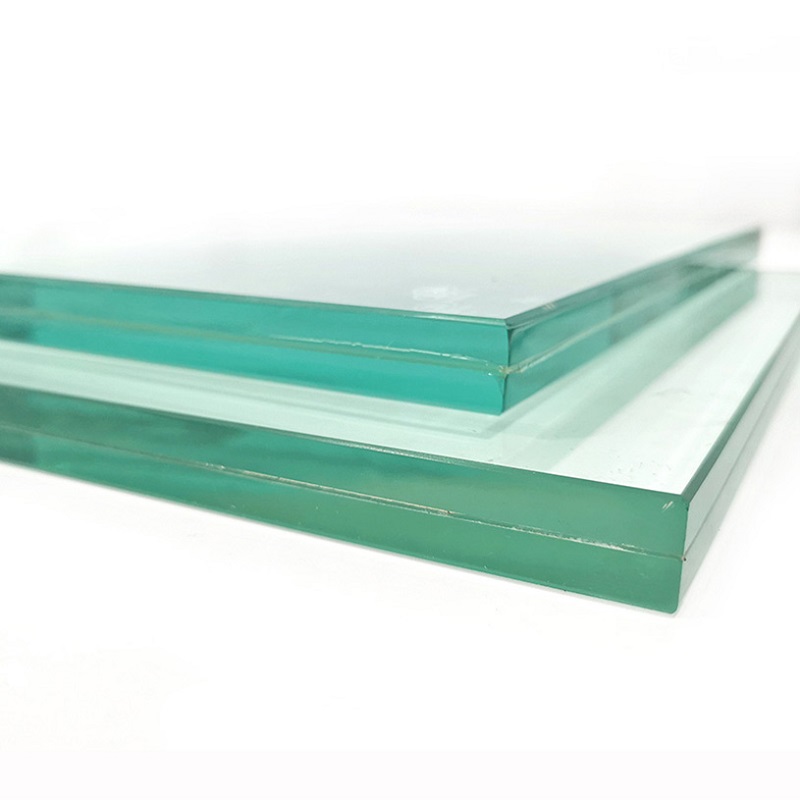Wired Glass Process: A Symphony of Strength and Delicacy
In the vast world of building and decorative materials, glass holds a significant position as a material that combines both functionality and artistry. From its initial purposes of providing light and shelter from the wind to its current role in shaping spaces and expressing aesthetics, the forms and techniques of glass have continuously evolved. Among these, wired glass, as a unique and ancient type of art glass, achieves a perfect balance between safety, aesthetics, and functionality by ingeniously embedding a metal wire mesh within the glass matrix. It stands as a shining pearl in the family of art glass, redefining the fragile image of traditional glass and unlocking infinite possibilities in modern design.
I. Core Characteristics of Wired Glass Material
Wired glass, as the name suggests, is a composite glass product made by sandwiching a specially designed metal wire mesh between two layers of glass, which are then fused together through a high-temperature, high-pressure process. This unique structure endows it with numerous properties that surpass those of ordinary flat glass.
1. Exceptional Safety and Explosion Resistance
This is one of the most critical physical characteristics of wired glass. When traditional flat glass is subjected to a strong impact, it shatters into sharp, irregular fragments that can easily cause injury. In contrast, the metal wire mesh in wired glass acts as a robust skeleton. Upon impact, the glass may crack, but the fragments remain firmly adhered to the mesh, preventing them from scattering or falling. This "cracked but not broken, broken but not scattered" feature significantly reduces the risk of cuts and injuries, making it a highly effective safety glass. It is particularly suitable for public spaces with security concerns, seismic requirements, or high foot traffic.
2. Outstanding Fire Resistance and Thermal Insulation
In the field of fire protection, wired glass demonstrates its irreplaceable value. The embedded metal mesh, with its good thermal conductivity, can absorb and disperse heat during a fire, effectively delaying the overall shattering of the glass caused by uneven heating. Even if the glass eventually softens and melts under high temperatures, the metal mesh retains its integrity, forming a temporary fire barrier that blocks the spread of flames and high-temperature smoke. This provides invaluable time for evacuation and firefighting efforts. As a result, this type of glass is often certified as a fire-resistant building material and is a crucial art glass choice for enhancing building safety standards.
3. Unique Decorative Artistic Effect
If safety is the skeleton of wired glass, then artistry is its soul. The patterns of the metal wire mesh can vary endlessly—from classic grid and diamond patterns to intricate floral, geometric, abstract, or even customized designs. This makes each piece of wired glass a unique work of art glass. When light passes through, the mesh creates rich and varied light and shadow effects, producing a hazy and layered ambiance that ensures privacy while evoking a dreamy, illusory spatial atmosphere. This perfect fusion of industrial elements and aesthetic design makes wired glass a favorite material among designers, capable of effortlessly adapting to various styles, from retro luxury to modern minimalism.
4. Good Anti-Theft and Protective Functionality
Although wired glass cannot be compared to specialized bulletproof glass, its embedded metal mesh significantly increases the difficulty of forced entry. It is challenging for intruders to quickly and quietly create a hole large enough to pass through, providing an additional layer of physical protection for buildings. This combination of decoration and protection makes it highly sought-after for locations such as villas, museums, and boutiques, where both aesthetics and security are prioritized.
5. Enhanced Strength and Wind Pressure Resistance
The embedded metal wire mesh acts as the "bones" of the glass, significantly improving the overall mechanical strength of wired glass. This makes it more resistant to wind pressure and impact compared to ordinary glass of the same thickness. As a result, large-scale wired glass facades or partitions can be more stable and reliable, expanding its application in building exteriors and large interior spaces.
II. Wide-Ranging Applications of Wired Glass
Thanks to its unique characteristics, the applications of wired glass have long surpassed traditional doors and windows, extending into architecture, interior design, furniture, and even artistic creation.
1. Architectural Doors, Windows, and Curtain Walls
This is the most classic application of wired glass. When used in building doors, windows, and curtain wall systems, wired glass meets the basic need for natural lighting while simultaneously achieving multiple goals such as safety, fire resistance, and decoration. Particularly in areas with unified architectural style requirements or for commercial buildings seeking a distinctive facade, custom-patterned wired glass curtain walls can become iconic elements, transforming functional exteriors into large-scale displays of art glass.
2. Interior Space Partitions and Wall Decorations
In modern interior design, open spaces are increasingly popular, and wired glass is an ideal material for creating visual separations without solid barriers.
Office Partitions: Used in meeting rooms, managers' offices, and other areas, they delineate space while maintaining visual transparency, avoiding the oppression of fully enclosed spaces. The mesh's hazy effect ensures privacy, while light can still penetrate, maintaining bright lighting in the office. This is a type of art glass that enhances the style of workspace.
Residential Spaces: In homes, used for partitions between living rooms and studies, dining rooms and kitchens, or as shower enclosures in bathrooms. It not only provides effective explosion protection but also serves as a stunning visual feature, elevating an ordinary glass partition into a decorative focal point.
Feature Walls: Customized wired glass feature walls, whether for TV walls, headboards, or entryways, can instantly enhance the texture and artistic atmosphere of a space, becoming the perfect accent for a personalized home.
3. Fire Escape Routes and Zoning
Due to its excellent fire resistance, wired glass is mandated or recommended for use in fire escapes, stairwells, fire doors, observation windows in firewalls, and vertical shafts in many buildings. In these locations, it strictly adheres to fire safety codes, ensuring occupant safety during a fire, while avoiding the confinement and darkness associated with traditional solid firewalls. It maintains visual continuity and brightness in the space. This glass serves as a guardian of safety in life-saving passages.
4. High-End Commercial and Display Spaces
Wired glass is widely used in commercial spaces such as shopping malls, brand boutiques, hotels, restaurants, cafes, and museums.
Storefront Windows: They display merchandise while the art glass nature of wired glass itself enhances the brand image and store appeal.
Interior Decorations: Used for railings, screens, ceilings, or walls to create specific commercial atmospheres, whether retro, industrial, or lightly luxurious.
Display Cases for Artifacts and Exhibits: In museums, wired glass provides clear visibility while its safety and explosion-resistant characteristics offer an extra layer of protection for precious exhibits.
5. Furniture and Lighting Design
The creativity of wired glass has long extended into product design. Designers use it to create dining tables, coffee tables, cabinet doors, and various lighting fixtures. When lit from within, the patterns of the metal mesh are projected clearly, forming exquisite light and shadow art, turning each piece of furniture or lighting into a unique collection of art glass. This application transforms glass from a cold building material into a warm and emotional companion in daily life.
6. Art Installations and Sculptures
From a purely artistic perspective, wired glass is an excellent medium for creation. Contemporary artists use its transparency, refraction, and embedded patterns to create large-scale art glass installations and sculptures. Light becomes the "brush," and the glass and metal mesh become the "canvas," together constructing ever-changing visual feasts that interact with viewers and the space, pushing the artistic value of wired glass to new heights.
Conclusion
In summary, wired glass is far from an ordinary building material. It represents a successful cross-material innovation—a perfect fusion of strength and beauty. Through its sturdy metal wire mesh, it reinforces the inherent fragility of glass while expanding its application boundaries. With its artistic essence, it elevates the ordinary nature of glass, imbuing spaces with emotional depth and narrative quality. From its robust safety features to its dreamlike aesthetic appeal, wired glass fully demonstrates how functionality and form can coexist in harmony, and how pragmatism and romanticism can advance together. In the future of architecture and design, driven by continuous technological innovation and increasingly open design concepts, this captivating art glass will continue to shine—using its unique language to create safer, more beautiful, and more imaginative living environments for humanity.





